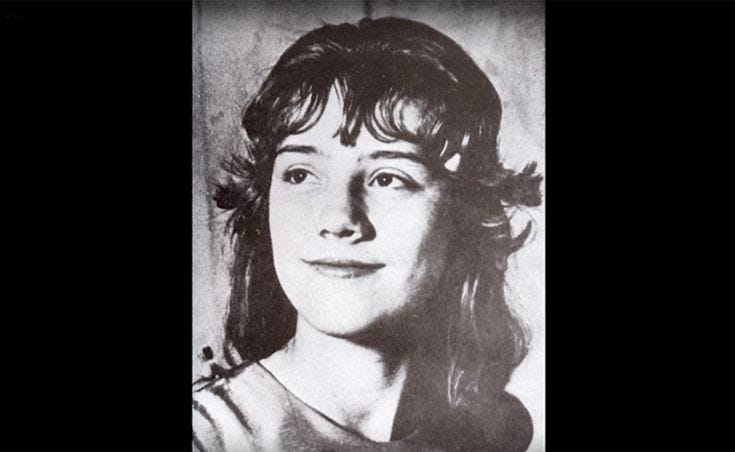Murder Next Door: The Horrifying True Story Behind 2007's "The Girl Next Door"
The 2007 film The Girl Next Door shocked and repulsed viewers with its grim depiction of a girl being tortured at the hands of her caretaker. However, the real events it was based on are even worse
*Warning: This Article Contains Sensitive Subject Matter*
Background
In 2007, Jack Ketchum’s best-selling 1989 horror novel ‘The Girl Next Door’ (AKA Evil) was adapted and released as a psychological thriller, and it was loosely based on the horrifying events surrounding the murder of sixteen-year-old Sylvia Likens.
The film received mixed reviews upon its release, with some people claiming it was awful, while others praised its execution, including author Stephen King, who said of the film:
“The first authentically shocking American film I've seen since Henry: Portrait of a Serial Killer (1986) over 20 years ago. If you are easily disturbed, you should not watch this movie. If, on the other hand, you are prepared for a long look into hell, suburban style…”
Film Overview
The Girl Next Door, directed by Gregory Wilson and written by Daniel Farrands and Philip Nutman, is set in suburban 1950s America and follows a deeply disturbing story of cruelty and abuse inflicted on a teenage girl.
The film’s story is told through the eyes of David Moran, a middle-aged man who looks back on a haunting summer from his childhood. In his neighborhood, two sisters, Meg and Susan Loughlin, come to live with their aunt Ruth Chandler and Ruth’s three sons after their parents die in a car accident. At first, Ruth appears like the “cool mom” on the block: she lets the local boys drink beer, smoke, and hang out in her house freely.
As the film progresses, it shows Ruth begin to fixate her bitterness and resentments on Meg; she starts by verbally abusing her, shaming her with insults, accusing her of being promiscuous, and punishing her harshly for minor indiscretions; she even confiscates Meg’s necklace, which was a keepsake from her late mother.
Meg attempts to stand up for herself, but this only furthers Ruth’s rage. Meg tries to report the abuse to a local policeman, Lyle Jennings, but he does nothing to help her. When Ruth finds out about this, she escalates the punishments and imprisons Meg in the basement, binding and starving her, and encourages her sons and the neighborhood boys to take part in humiliating and torturing her.
Over time, the torture becomes more depraved and frequent. Meg is often beaten, burned, sexually assaulted, and branded with a hot wire, as Ruth encourages other children from the neighborhood, as well as her own children, to burn her with cigarettes and in one instance, encourages her son to rape her - afterwards Ruth carves a sick message into Meg’s stomach before burning her with a blowtorch.
Meanwhile, David (who has feelings for Meg) struggles with guilt and fear - he tries to help her, bringing small comforts and begging her to escape, but he unfortunately fails to inform the police.
In the film’s climax, David finally fights back by setting fire to the basement to distract Ruth, and in the chaos of the flames, he bludgeons Ruth to death, but his rescue comes too late: Meg is fatally injured. In her last moments, she thanks David for trying to help her and tells him she loves him.
In the present day, an older David is still haunted by what happened and reflects on Meg’s final words: “It’s what you do last that counts.”
Based on True Events
Unlike in the film, Sylvia Likens had no one to look out for her, to help her. No fires were set, no one tried to encourage or help her to escape, and no one cradled her broken, scared body as she passed away in the arms of someone she loved, or loved her back.
Sylvia Likens was born on January 3, 1949, in Indianapolis, Indiana, the third of five children. Her parents, Lester and Elizabeth, were carnival workers who made a living by selling beer and candy at carnival stands throughout Indiana.
Their two sons would travel with them to help with the business, but Sylvia and her younger sister Jenny were not allowed to do the same, due to concerns about their safety and education.
Instead, Jenny, who had contracted polio as a child and as a result wore a brace on her leg, and Sylvia were often left in the care of their grandparents or friends of the family while their parents and brothers traveled for work.
Sylvia was described as a friendly girl and a caring older sister who always protected her younger sister, Jenny. As a teenager, Sylvia would earn her own money by babysitting and ironing for friends and neighbors - this would soon change.
In July 1965, their mother, Elizabeth, was arrested and jailed for shoplifting. This added even more financial strain to an already strained and stressful marriage and work life. With Elizabeth behind bars, the responsibility for caring for and providing for their children fell on Lester.
To ease this burden, Lester arranged for Sylvia and Jenny to stay with a woman named Gertrude Baniszewski in Indianapolis. Two of Baniszewski’s daughters, Paula and Stephanie, attended the same school as Sylvia and Jenny.
The arrangement was for Lester to pay Gertrude $20 a week to board and care for his daughters until he and Elizabeth could pick them up in November of that year. After assuring Lester that she would treat the girls like her own children, Sylvia and Jenny moved into Gertrude’s house at 3850 East New York Street in early July 1965.
On the surface, the arrangement seemed like a good idea. However, no one could have known the sadistic evil that lay within Gertrude Baniszewski and the unspeakable horror that awaited Sylvia Likens.









